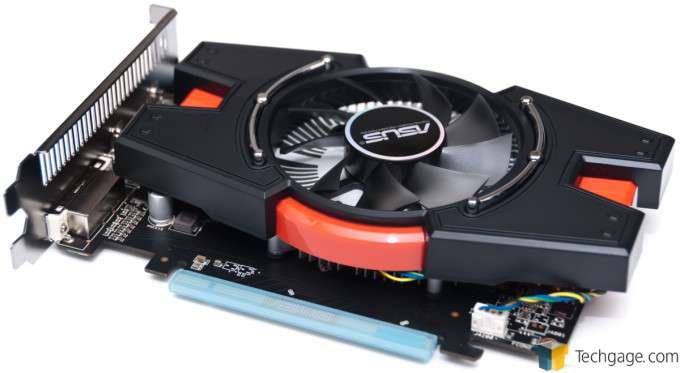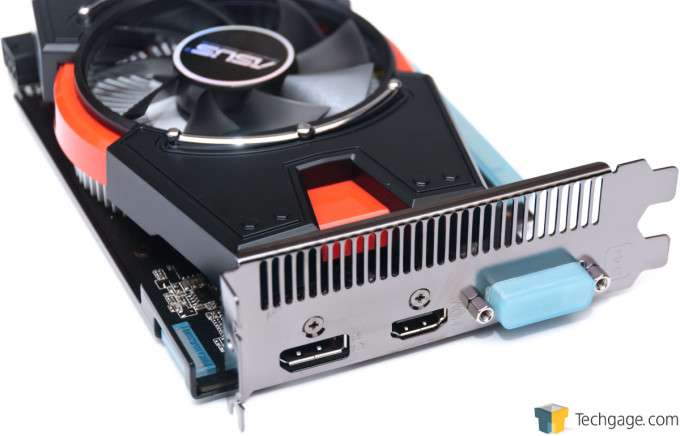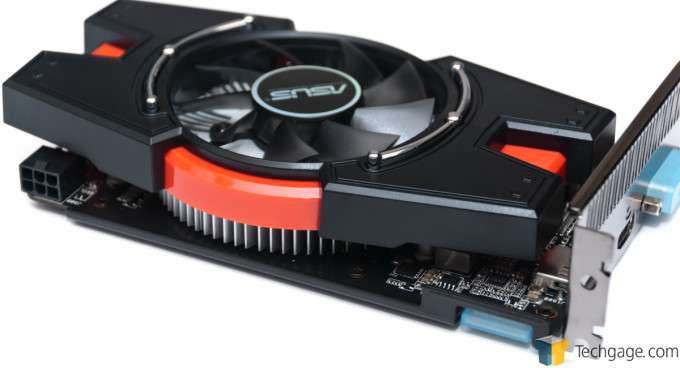- Qualcomm Launches Snapdragon 4 Gen 2 Mobile Platform
- AMD Launches Ryzen PRO 7000 Series Mobile & Desktop Platform
- Intel Launches Sleek Single-Slot Arc Pro A60 Workstation Graphics Card
- NVIDIA Announces Latest Ada Lovelace Additions: GeForce RTX 4060 Ti & RTX 4060
- Maxon Redshift With AMD Radeon GPU Rendering Support Now Available
How Low Should You Go? ASUS Radeon R7 250X Graphics Card Review

After we were done benchmarking AMD’s $110 Radeon R7 260 last winter, we were impressed enough to call it a “console killer” (thanks in part to the ‘next-gen’ consoles having been released not soon before). Will we be able to say the same thing about the R7 250X, a model a mere one-step down? That’s what we’re going to find out.
Page 1 – Introduction
With NVIDIA expected to launch some high-end graphics cards in the weeks ahead, I figured that there’s no better time than right now to tackle something a bit more modest. Alright – a lot more modest. I’m talking about the AMD’s Radeon R7 250X.
In truth, this is a card I’ve wanted to take a look at since its announcement earlier this year, simply because it’s an HD 7770 GHz Edition in a different skin. Back when that card was released, in early 2012, it was well-received overall – it offered some great performance for its price-point.
Where the excitement in the R7 250X might die down a little bit is with the realization that this current $90 offering was a $130 offering two-and-a-half years ago. That being the case, it might seem a little odd to tackle it now, but the fact is, the R7 250X is a current sub-$100 offering, and that’s intriguing to me. What we’re here to find out is if this “classic” Cape Verde XT can give us sufficient framerates at 1080p.
Last December, after we all had a hearty laugh about the performance of the “next-gen” consoles, I had taken a look at the card slotted right above this one, the Radeon R7 260. For its $110 price, I found it to be pretty outstanding. While we obviously had to rid some luxury graphical features like anti-aliasing and ambient occlusion in most games, I found that it had performed well enough to deserve the branding “console killer”.
It’s time, then, to find out if that card’s smaller sibling can at least come close to the performance we saw at that time.
| AMD Radeon Series | Cores | Core MHz | Memory | Mem MHz | Mem Bus | TDP |
| Radeon R9 295X2 | 5632 | 1018 | 8192MB | 5000 | 512-bit | 500W |
| Radeon R9 290X | 2816 | 1000 | 4096MB | 5000 | 512-bit | 250W |
| Radeon R9 290 | 2560 | 947 | 4096MB | 5000 | 512-bit | 250W |
| Radeon R9 280X | 2048 | <1000 | 3072MB | 6000 | 384-bit | 250W |
| Radeon R9 285 | 1792 | <918 | 2048MB | 5500 | 256-bit | 190W |
| Radeon R9 280 | 1792 | <933 | 3072MB | 5000 | 384-bit | 200W |
| Radeon R9 270X | 1280 | <1050 | 2048MB | 5600 | 256-bit | 180W |
| Radeon R9 270 | 1280 | <925 | 2048MB | 5600 | 256-bit | 150W |
| Radeon R9 265 | 1024 | <925 | 2048MB | 5600 | 256-bit | 150W |
| Radeon R7 260X | 896 | <1100 | 2048MB | 6500 | 128-bit | 115W |
| Radeon R7 260 | 768 | <1000 | 1024MB | 6000 | 128-bit | 95W |
| Radeon R7 250X | 640 | <1000 | 1024MB | 4500 | 128-bit | 95W |
| Radeon R7 250 | 384 | <1050 | 1024MB | 4600 | 128-bit | 65W |
At quick glance, the R7 250X looks like a small step down from the R7 260, with 83% of the cores, the same amount of memory, and the exact same clock speed of 1GHz. But, it’s easy to overlook what really matters here: The memory speed. While the R7 260 is clocked at a beefy 6000MHz, the R7 250X falls down the ladder a few pegs to sit at 4500MHz. That’s a limitation that will without question rear its ugly head in our benchmarks, as memory speed is extremely important with low-end cards (and IGPs, for that matter).
As seen at the top of the page, it’s an ASUS iteration of the R7 250X I’m looking at here. It doesn’t have a special brand like the bigger DirectCU cards do, but it still does have an attractive cooler – something we never used to see on sub-$100 options. While video ports may vary from model to model, this one includes three at the back: DVI, DisplayPort, and HDMI.
Turning the card around a bit, we can see that this card is CrossFire-capable, and also requires a 6-pin PCIe power connector. With its modest specs, the R7 250X carries a TDP of 95W. The only card in AMD’s current lineup that uses less power (excluding mobiles) is the R7 250, at 65W. That card dramatically degrades the core count, and doesn’t cost much less (if anything less) than the X version, so I’d recommend ignoring it completely.
On the topic of pricing, this ASUS R7 250X currently sells for $118, which isn’t the sub-$100 price-point I mentioned above. However, this model isn’t pre-overclocked, and when AMD first announced the 250X, it announced a $99 price tag along with it. Why ASUS’ card costs so much more, I’m not sure. Nonetheless, without a mail-in rebate, you can easily score an R7 250X for $95, and with a mail-in rebate, you can whittle the price down to $75 in some cases.
After a quick look at our test system and methodologies, we’ll get right into performance testing.
Support our efforts! With ad revenue at an all-time low for written websites, we're relying more than ever on reader support to help us continue putting so much effort into this type of content. You can support us by becoming a Patron, or by using our Amazon shopping affiliate links listed through our articles. Thanks for your support!








